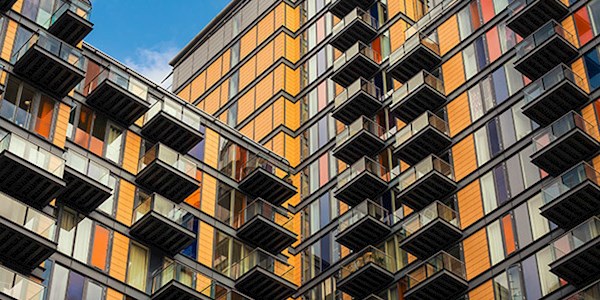An analysis of the most pressing concerns based on insights from 1,000 UK business leaders.
Author: Tracy Keep

With up to three million people affected by the cladding scandal in the UK,1 fixing the issue was always going to be a tall order. The government is targeting cladding manufacturers in its bid to raise £4 billion2 to contribute to the removal of all unsafe cladding from buildings, with estimates for the total cost of remediation for high-rise buildings estimated to be £15 billion.3
In January 2022, Michael Gove, Secretary of State for Levelling Up, Housing and Communities, warned developers that they must pay to fix the cladding crisis that they caused. In a letter to the Construction Products Association, he invited the organisation to propose a deal by March 2022, while also highlighting that three cladding providers most closely associated with the Grenfell Tower fire had made around £700 million in profit since the tragedy in 2017.4
Meanwhile, many leaseholders remain concerned that their flats have become unsellable due to lenders being unwilling to offer mortgages without the necessary remedial work completed.
Further government proposals around cladding
Further proposals are being made by the government to protect residents in high-rise buildings, ensuring they are not personally billed for the remediation of unsafe cladding, and that the parties responsible for the cladding crisis will be held accountable.
The new proposals, to be agreed in parliament, include:
- New protections for leaseholders living in their own flats, or subletting, in a building over 11 metres tall, with no bills for fixing unsafe cladding.
- Opening up the next phase of the Building Safety Fund to escalate the removal of dangerous cladding from high-rise buildings, prioritising the government’s £5.1 billion funding on the highest risk.
- Companies at fault will be held properly to account—a new team is being established to pursue and expose them, making them fix the buildings they built and face commercial consequences if they refuse.
- Amendments to the Building Safety Bill will allow building owners and landlords to take legal action against manufacturers who used defective products on a home that has since been found unfit for habitation. The power will stretch back 30 years and allow recovery where costs have already been paid out.
- Cost Contribution Orders may be placed on manufacturers who have been successfully prosecuted under construction products regulations. These orders will require them to pay their fair share on buildings requiring remediation.
- Developers and product manufacturers that do not help fix the cladding problem could be blocked from housing market.
The Building Safety Bill is still making its way through parliament, and is the biggest change to building safety regulation for 40 years. It focuses on the very early planning and design stages of a building project, as well overseeing the safety and performance of all buildings. It will include the establishment of a Building Safety Regulator (BSR) to enforce a new, more stringent regulatory regime for high-rise buildings in scope. The BSR will have the power to charge fees to recover costs from regulated parties.
What do the new proposals mean for professional indemnity insurance?
We looked at the possible changes the Building Safety Bill may bring to other pieces of legislation, such as the Defective Premises Act 1972, in a previous Gallagher news article, noting that limitation periods for cladding-related claims were being extended from 6 years to 15 years. Under the new proposals being discussed, this would extend further to 30 years, leaving designers, contractors and developers vulnerable to claims long after completion of historic projects—as long as homeowners can show that cladding defects to their building were breaches of the building regulations in force at the time of construction.
With this in mind, many companies in the UK building sector will be notifying their insurers of circumstances from which a future claim could arise. This, potentially, could lead Professional Indemnity insurance rates to rise even higher in an already challenging insurance market.
The Building Safety Bill is currently at the report stage, which means all members of the House of Lords have a further opportunity to examine it and make amendments. You can check the progress of the bill through parliament here.
In the meantime, it is recommended that those responsible for the design of high-rise buildings begin to prepare now for the proposed changes.
Of course, we will be keeping our construction clients updated with any further developments.




